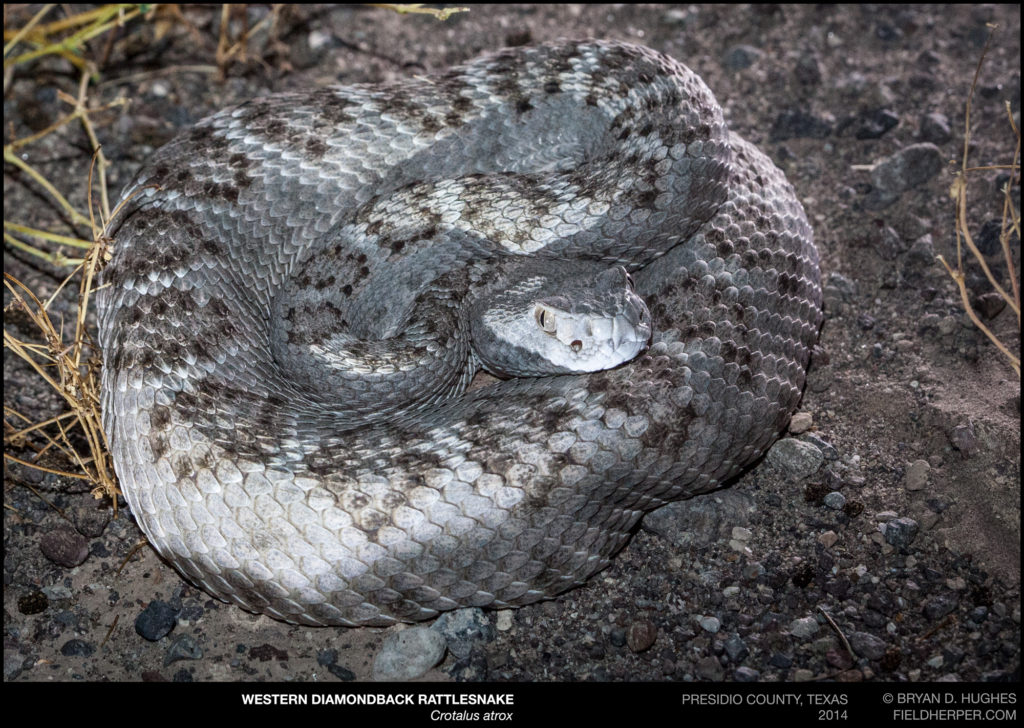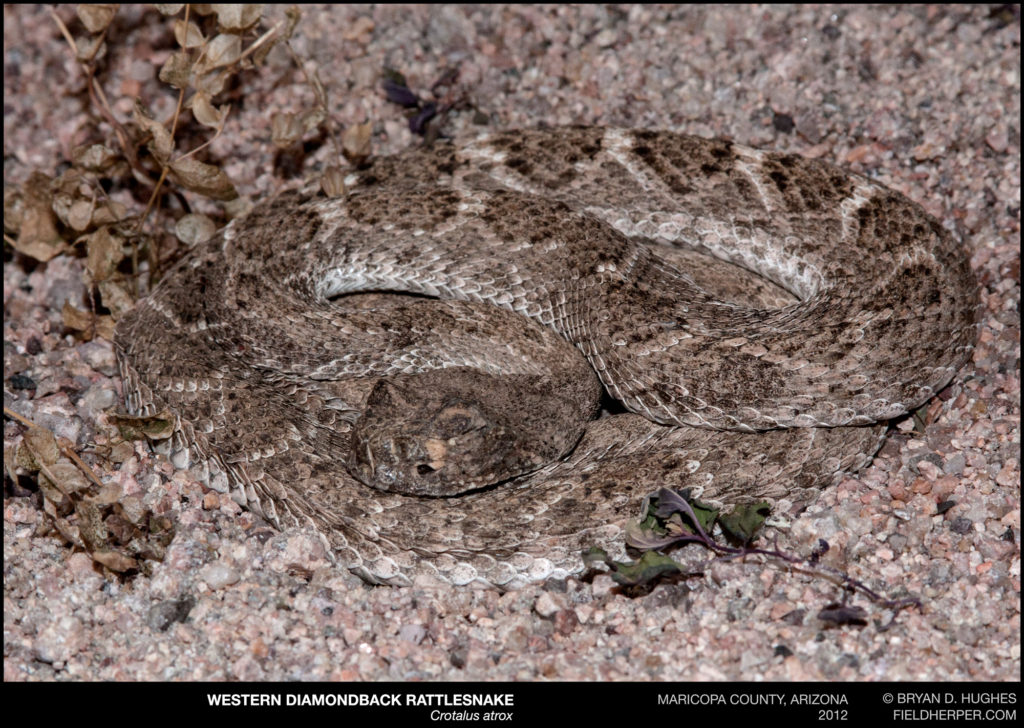
As temperatures break records and stay in the upper 90’s for days at a time, rattlesnake sightings are increasing. However, does it mean that there are more of them out than there usually are at this time of year, and does that mean there are more snakes? These are questions we are often asked as we handle the yearly increase in snake activity around valley homes.
The answer? Not really.
Although rattlesnakes are indeed cold blooded and require warm temperatures to be active, there is such thing as too much of a good thing. An Arizona rattlesnake will actually die if it’s body temperature gets above 105F for too long. A sunny 95F day will have exposed ground and rock at much higher temperatures very early in the day. This means that hot, sunny weather is actually bad, if not lethal, to rattlesnakes caught out in the open. The idea that the hotter the weather, the more rattlesnakes are out, is incorrect.
Hot weather can lead to warmer average nighttime temperatures, which can signal rattlesnakes that it’s time to leave their Winter hiding spots and go out into the world. When temperatures vary wildly between extreme heat in the daytime and cold, dry conditions at night, this can also limit snake activity.
The average Spring temperatures are about right for rattlesnakes to make the most of it, with daytime temperatures limited to the low to mid 80’s and night time lows in the 60’s.
So why are there so many rattlesnake sightings right now?
A rattlesnake encounter requires two participants: the snake of course, and a person to see it. Arizona’s exceptional Spring weather makes for good hiking, golfing, and it’s of course time to get to the yard work put off in cooler conditions. That means that, not only are rattlesnakes coming out for first meals and mates, but human activity is also on the increase. More people and more snakes all moving around together means that there will be more encounters, and nice weather can influence both of these.
So if a rattlesnake crawls in the desert and nobody is around to see it, does it really crawl? Yes, absolutely, but they don’t get poked with a stick or have pebbles tossed at it.
Will the hot weather mean more rattlesnakes this year? My uncle Randy says so.
No, it won’t. In fact, unseasonably hot weather is pretty tough for wildlife, and if the trend continues, we can expect to see a die-off of some Arizona rattlesnakes, especially those caught in the urban heat island. Higher average temperatures without additional rainfall can mean less prey availability for rattlesnakes, who rely on their food to supply a portion of the water they need to survive. Thankfully, the mini heat wave looks to be coming to an end, punctuated with some cool, wet weather.

Even if conditions were absolutely perfect for rattlesnakes, it would not mean more rattlesnakes this year. Rattlesnakes in the valley give birth to young in the late Summer and Fall, which means that a Springtime with amazing conditions for rattlesnake survival would mean that there are the same amount as there would be anyway. If conditions remain good throughout the year, it could lead to higher survival rates, which could lead to more babies born, and if they manage to survive, then consecutive years of good conditions would have more rattlesnakes. But tell uncle Randy to cool down the misinformation jets a bit – Arizona rattlesnakes aren’t like weeds, and do not spontaneously appear alongside green grass.
We’ve been quite busy relocating rattlesnakes from homes around the valley and seeing lots of snake sightings on social media, but really no more than is expected. The Rattlesnake Solutions snake removal line is a bit busier than last year, but that’s just because we’re another year older, a little more “out there” marketing-wise, and the city is a little bit bigger. All indications are that rattlesnake activity is pretty normal.

